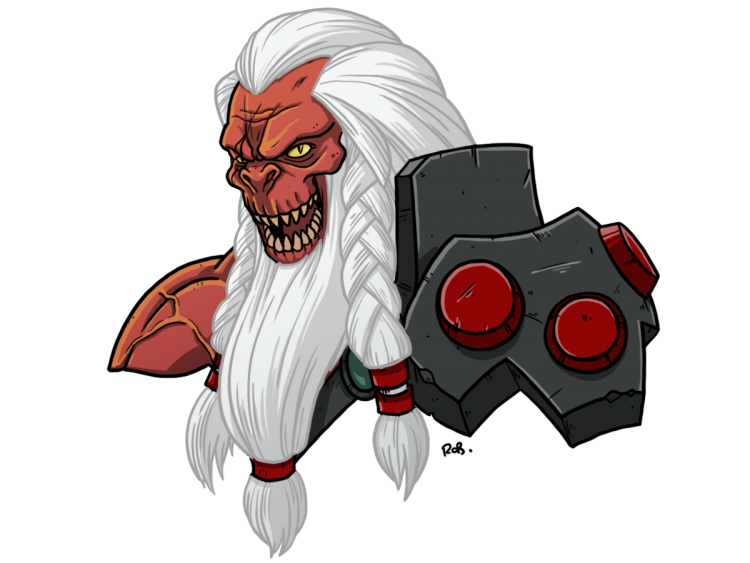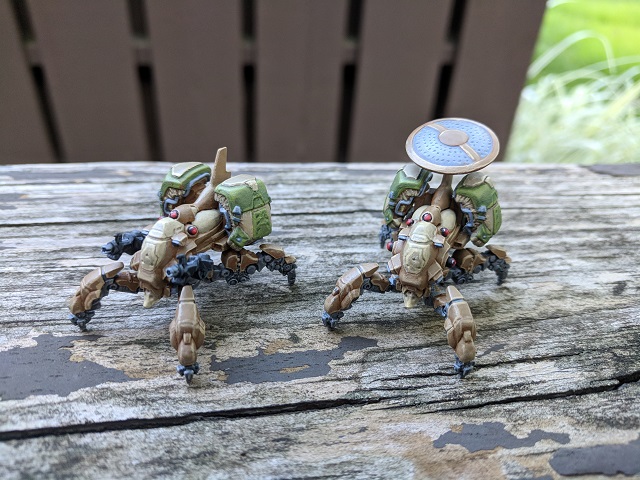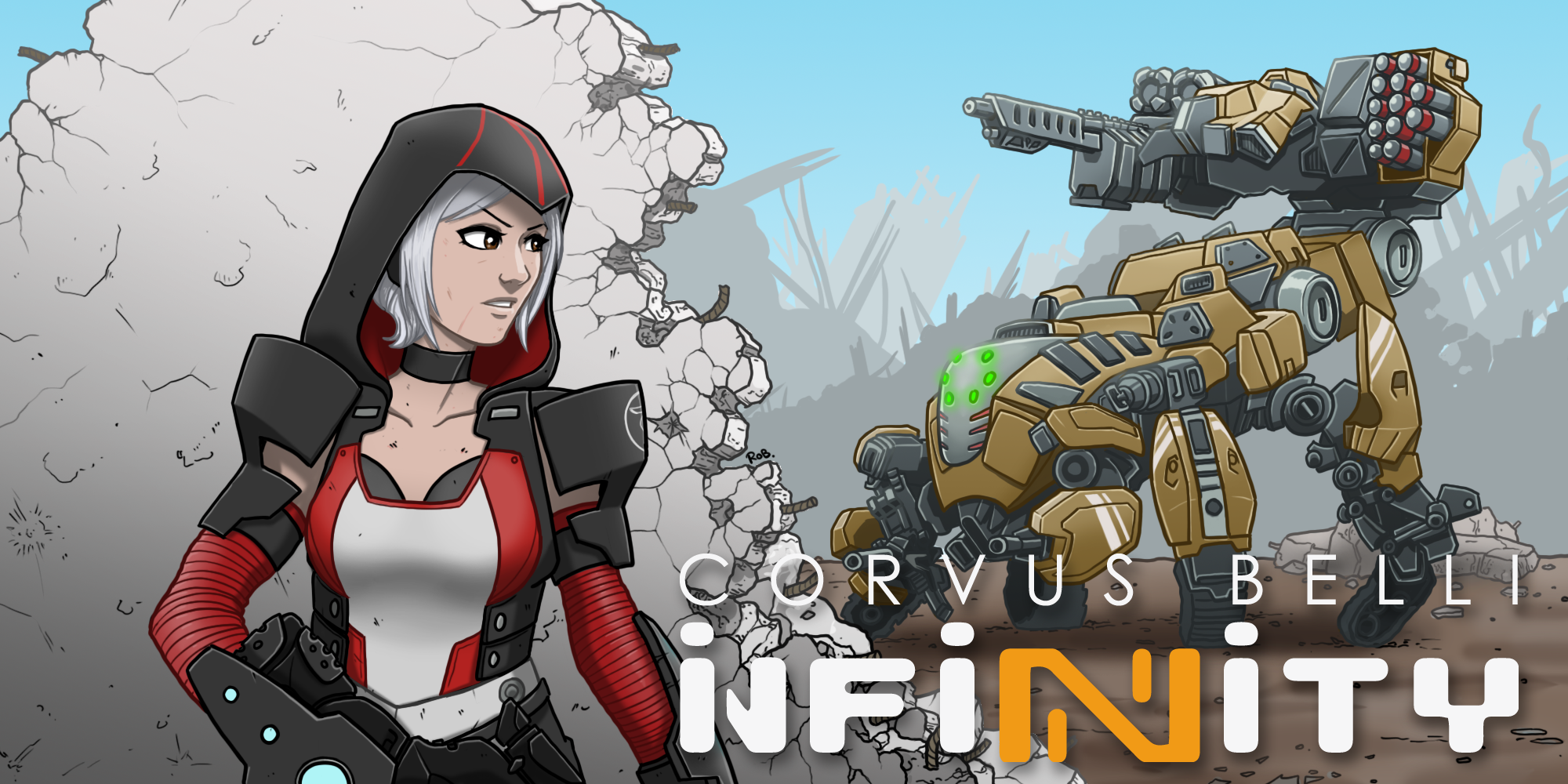List building in Infinity is a very different challenge to many other wargames, and as a new player working out what is a “good list” can be hugely intimidating. Asking more experienced players if a unit or a list is “good” often yields the answer of “it depends” or “it seems fine, depends how you play it,” which can be something of a barrier. Particularly when it becomes clear that while those things are broadly true, you can absolutely make huge errors in list building that cause problems later on.
In this article we’re not going to give you example lists or tell you what units you should or shouldn’t bring. Infinity is a game with a huge number of variables and there are few, if any, units that are truly “bad”. Some are, of course, more competitive than others, but that doesn’t erase the fact that you can create a good infinity list by picking your favourite unit or two and then building around that. It’s important to understand the conceptual building blocks of lists to let you do this as effectively as possible.
As an additional note, this article isn’t intended for hardcore tournament players – I don’t have the chops to claim I can speak on that subject. This article is intended for players who are starting out and need some pointers on the basics of building a list.
The mission before the team
It’s very common in games like 40k to build lists in isolation of the scenario or mission you’re playing – you can look at a list and go “this is a decent list” without knowing specifically what the objectives will be. While tailoring lists to missions can be part of the equation in such games, in Infinity it’s probably the most essential thing to consider. A list that is absolutely fantastic for one mission might literally be unable to score in another, so you have to consider what you’re playing before you design a list.
That’s why in a tournament situation you’ll be told what missions are going to appear before you submit your lists (more on that later). You should also follow this rule of thumb when you’re looking at casual play too – agree with your opponent what you’re playing in advance, not just when and where.
Let’s look at just two of the ITS missions to explain why this is so important: Frontline and Mindwipe.
Frontline is one of the simpler missions, where you are tasked with controlling areas of the table – the closer to the enemy deployment zone, the more that area is worth. You have a single classified objective, but you can convert it into points to help score one of the zones you’re looking to control. This mission is significant because you literally cannot score if you don’t leave your DZ; because specialists have no particular role; and because you need to be aggressive to score higher.
Mindwipe is a more complex mission, in which you are attempting to identify via a console which enemy server contains a rogue AI and then destroy it, while at the same time stopping your opponent doing the same to you. Activating the console requires a specialist, and hackers get an advantage, and then destroying the servers needs either hackers or close combat weapons with the antimateriel trait. That means that you need the ability to get your troops upfield to target those servers, defend your own, and bring along specialists and troops with antimateriel weaponry.

I could build a fantastic list for Frontline that literally couldn’t score a single point in Mindwipe (outside of maybe a classified objective) and that highlights the need to know what you’ll be playing in advance. Sometimes people talk about Take All Comers lists in Infinity, but that’s a stretch to be truthful – it’s almost impossible to build a list that can adequately compete in all missions. That’s why tournaments work on the basis of allowing you to bring two lists, and picking between them based on the mission and your opponent.
The first and most important principle with list building is, not to be too obvious, make lists that can win the mission. You can think about tailoring the list to be better at the mission later, but at the very least make sure you’ve not missed anything and are pretty a knife to a gunfight, or, worse, not bringing a DA close combat weapon to a server-blowing-up fight.
Components of the mechanism
It’s helpful to me to think of a good infinity list like a beautiful mechanism – every element of it slots into every other element, producing a complex interplay that generates the result I want. Before I play with a list I always look at each trooper in turn and think “What is this doing for the list?”. That way you ensure that all of your component parts work together.
But we’re not just thinking about individual troopers as components – each list is made up of little nested mechanisms and combinations that produce effects when used together. A good list is made up of several of these little engines, each producing an effect you want, that when used together produce the outcome you need for the mission at hand.
I said earlier that just trying to write take all comers lists for Infinity is a bit of a dead end, and that’s true, but looking at and theorycrafting these components is where your time and effort can yield enormous results. I tend to think of the lists I write without a specific game in mind not as actual lists, but as a toolbox of components that I can then build a list from modularly. Identifying the way these little mechanisms work and can work, and what they’ll do for me, is absolutely key to success. Let’s look at some simple examples so you can see how this might work.

The Yaogat sniper for the Combined Army is a nasty little unit – a MULTI sniper with +1 Burst (my preference) or +1 damage, MSV Level 2, and that can slot into a haris or core team happily if you’re running a sectorial. These are great little units – just as a single piece they can do something useful. There’s nothing like a MSV Level 2 sniper with decent coverage to put the fear into an opponent relying on Mimetism to keep their units alive. But when combined with a few other units, this model becomes part of a wonderful little mechanism that you can drop into a list to pose a specific kind of threat.
One of the big advantages of MSV 2 is that it simply ignores smoke, and that means having units that drop smoke can provide you with a huge advantage. Suddenly you have a block on the table you can see through, and your opponent can’t with most units. So bringing some units that throw out some smoke makes a lot of sense – but will just any unit do? Well, they’ll all do something, but I tend to look towards Daturazi for this job. As impetuous troops they can have a move before your activate turn and throw out a smoke grenade immediately, and their high PH means they’re unlikely to waste that order. This added speed and accuracy means it’s easy to get smoke where you want it to be and even better your sniper can provide some level of covering fire for these nasty little melee monsters as they move up. The Daturazi, with chain rifles, can provide a good ARO deterrent to anyone attempting to head through them to deal with the Yaogat.

This all makes this little pairing – Yaogats and Daturazi – a nice add into a list. They won’t be in a fireteam together even if you’re running a sectorial, and it’s important to recognise that your little component parts can be fireteams, but don’t have to be. In fact you’ll want these little combinations spread across them if you’re bringing fireteams, to ensure that a fireteam caught out of position doesn’t scupper all your plans at once when a key member goes down.
There are a bunch of different ways of implementing this component too, and that’s important to realise when you’re looking at how to build lists. This combination is a conceptual one, not a strict one. You’ve identified the way in which that interaction can lead to useful outcomes, so let’s quickly look at a couple of extreme implementations of this idea.
First up is one which will dominate a large amount of a list, especially at lower point values. You can slot Daturazi into a core (which in of itself is a cool little component, as it makes them no longer impetuous, giving them a lot more staying power) and 4 of them led by someone tough and scary is a nasty aggressive group. Couple that with a haris of two of the snipers and a support trooper of some kind and what you have is a terrifying execution of the core idea. This order-efficient block of terrifying close combat troops who enemies will want to focus down on, that are defending themselves with Burst 2 smoke grenade throws, laying down an absolute swamp of smoke for your yoagats to fire through. With two of the snipers you can have different lines of fire on them, covering more of the board, and altogether this can be an intimidating prospect for your opponent.
This might be great in a Frontline game. Your Yoagats can either stay in the deployment zone and then move up into the nearest zone in the last turn, or they can move forwards as they fire, trying to aim to take the middle. Meanwhile your core team is going to be pushing up aggressively, looking to grab that furthest zone and score a bunch of points. This might also work in mindwipe – the Daturazi all have antimaterial close combat weapons. But its utility feels a little less clear – it’s an awful lot of points to dump in something that easily impact the consoles, and which is a little too vulnerable to enemy defensive plays. It’s not hard to see how the core team will make it to the far DZ, but making it to the servers and destroying them seems a tougher get.
So let’s look at the other end of the spectrum as an alternative – a lone Yaogat sniper and a single Daturazi bodyguard. In this version, which works just as well in vanilla, we have a little pair of models that will complement each other well. Here the Daturazi doesn’t bother using the impetuous movement, and if possible both models are placed so that they are in total cover, with the Yaogat in a position that they can move to gain line of fire to key fire lanes and then back into total cover in a short skill move. The Daturazi needs Line of Fire to that point.
Here’s how it works: the Daturazi activates, and throws a smoke grenade at the point where the Yaogat will stand. It’s short range and the Daturazi PH is really good, so you’re unlikely to waste that order. Smoke down, the Yaogat can now short skill move into the smoke and back, and BS attack out of it at a target at the point where they have left total cover. Only MSV troops are gonna be able to ARO, and the Yaogat is protected by the cover the rest of the time. If anything nasty drops in behind to threaten, the Daturazi is a terrifying close up combatant and melee monster, and should do work defending your sniper.
These are both interpretations of that core combination, but expressed in different ways. Am I telling you to take this combination?
It depends.
But by spotting these little combos and having them in reserve, when you come to build a list you can use them modularly to create a list that’s focused on the mission or missions at hand. When you can start working out what these little mechanisms work well with, then you can start building a whole list.
Order, Orrrrrder
One question that I have asked a lot, and seen almost every other new Infinity player ask is: how many orders is enough orders? Altogether now:
It depends.
But as a rule of thumb: as many as possible. Orders are an incredibly precious resource in Infinity, and broadly you want as many as you can pack in. Some lists and factions work better with irregulars than others, but mostly you want as many orders in your pool as you can.
A common tactic to ensure this is with “cheerleaders” – models whose utility doesn’t have to be enormous because the main reason they’re there is to generate a normal order. These models absolutely can be useful (and the best lists make use of them in clever ways), but cheap normal orders are a precious resource, and you’ll likely want to take at least a couple.
Remotes are the most ubiquitous example of these – almost every faction has a simple remote with repeater and not much else for under 10 points. Some lucky players will have action to a whole bunch of these, while others will only be able to grab one or two.

The most valuable “cheerleader” pieces are models like the Imetron for Combined Army, because it literally is just a normal order in the pool for the price of a slot and a couple of points. They’re limited though, because they can be very potent, but if you have access to them it’s usually a good idea to take them.
Some factions have access to super cheap warbands that are regular too. Anyone who has run up against Kuang Shi knows how big a deal it is that Yu Jing can pack a bunch of regular orders in for so little. Check your lists carefully, work out what the cheapest way of packing some orders in is, and look at rounding out your lists with these.
Most lists end up being 2-4 of those little combos, hopefully which reinforce each other, some support (like a doctor or engineer) and some cheerleaders to round everything out.
That said, don’t be afraid of irregular orders! They absolutely have their place, and you need to consider your plan and the role of the models in question to see if they’re worth taking. As many playing against Hassassin Bahram, a 6pt irregular Daylami with a panzerfaust, infiltration and camo is a thoroughly infuriating little piece that slows advances down no end. Giving up those regular orders for three of these is often well worth it.
A list for all seasons
One last thing I want to talk about today is how tournaments handle list building, because it’s a little different to other games. For all ITS tournaments you’ll get a list of the missions being used in advance, along with any special rules or changes, and then you’ll build two lists with the same faction. When you play a game you’ll get to choose which list to use, giving you flexibility in how you build your lists.
The key way to deal with this challenge is to look at the missions and identify the odd ones out. Are all the missions primarily focused on button pushing and need a bunch of specialists… except for frontline where you just need hardcore units to push up the field? Then you build one list with lots of nice specialists to push those buttons, and one of rock hard bastards with no specialists in sight for the frontline mission.
What faction you face can change what list you bring. It’s not usually worth bringing lists tailored toward taking on specific factions, but that doesn’t mean it isn’t done! At least one tournament player we’ve run into admits to bringing one normal list and one list to tackle Ariadna, because he’s found playing against them so difficult in the past.
The most important thing to remember is that having two lists is a way of giving you different toolsets. Don’t waste the opportunity by taking two lists with a load of overlaps, or by taking two lists that do roughly the same thing but with a few different models. You want to maximise the advantage by taking lists that do different things, so you can pick which one to use for each game.
Last checks before battle
To summarise then, whenever we’re looking at building an Infinity list we should:
- Work out what mission we’re playing
- Look at the combos and groups you’ve identified, and see which ones will do useful things
- Build the core of your list by fitting these together to create a battleplan
- Fill out the rest of your list with cheap order generating models and supports
Have any questions or feedback? Drop us a note in the comments below or email us at contact@goonhammer.com.


